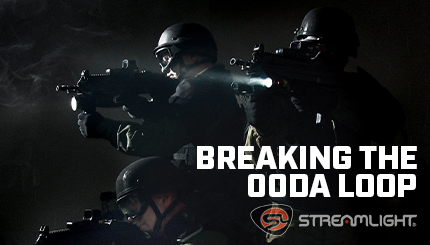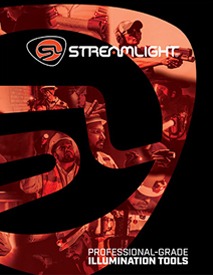Testimonials Detail
Please wait while results are retrieved...
It was 2 a.m. and the cold rain beat down on the side of the industrial building. He had no intentions of going back to his 10x10 prison cell and decided to fight instead. Deep in the corner of the room he stood in the shadows with a loaded pistol at his side. He had been chased by the S.W.A.T. team into this building and could feel them closing in fast. The man tried to control his breathing, looked at the doorway and decided that as soon as they started to come into the room, he would shoot them.
A few seconds passed when there was a magnificent explosion in the room. A bright, intense light attacked the rods and cones of his eyes and slammed his pupils down, making it more difficult to see in the dark. It seemed like an eternity passed before the man made the decision to fire his weapon, giving the officers ample time to enter the room and respond to his threat. He blindly started to point his gun at the officers, but never had a chance. There was an explosion of 8mm rounds from multiple guns into his chest. Paint from the Simunition training rounds covered his center mass. “King’s X” the lead trainer called, ending the simulation. The lights turned on and the team grinned at one another, reflecting on how effective the flashbang and flashlights had been at overpowering the other S.W.A.T. officer playing the role of “bad guy”. But why was it so effective?
This was any given night of training for us while I was on the S.W.A.T. team. Using tools and tactics to our advantage to hone our skills and increase our safety. I also taught these principals for five years while an instructor at a large state-run law enforcement academy. But to use these techniques and to use a flashlight for self-defense, we must understand why it works. Now, when I talk about using a flashlight for self-defense, I’m not talking about using it as a striking instrument or in strictly an LE environment. This article is about using a flashlight to break the OODA Loop, so that you can create distance and advantage over an attacker.
What is the OODA Loop? “The OODA Loop (Observe, Orient, Decide, Act) is a four-step approach to decision-making that focuses on filtering available information, putting it in context and quickly making the most appropriate decision while also understanding that changes can be made as more data becomes available.”. That decision is then acted on and then the entire process starts over again. In high level athletes or “occupation athletes” such as soldiers, law enforcement officers or firefighters, these loops can occur in seconds if not milliseconds.
The concept was developed in the 70s or 80s by US Air Force Colonel John Boyd. It was initially used to train soldiers and pilots to make time-sensitive decisions rapidly when there may not be time to gather all the information. Specifically, Colonel Boyd used it for dog fighting where he could adapt to a situation and beat an opponent inside of forty seconds. It’s important to understand these concepts because our opponents are going through them at the same time. To be successful in an outcome we need to break their OODA Loop before they can act or cause their actions to be incorrect based on poor information.
Based on this principle, the flashlight can be an excellent tool in disrupting a subject’s decision making when they’re attempting to hurt you or someone else. This is especially true in a situation when you may not have anything else for defense, such as in a secure area of an airport or at a large sporting event. The lighting environment also plays a part in this. A flashlight may not be as effective in the middle of a bright July day. But it can be particularly effective in low light or near someone.
An example of this is like the S.W.A.T. training scenario above. You may be in a situation where you observe someone who appears to be a threat. You orient yourself to handle that threat should the need arise, by grabbing a flashlight from your pocket. Their actions to assault you make you decide to shine 1,000 lumens of light into their eyes so that you can disorient them and run. You act by temporarily blinding them and running away.
We’ve also used tactics at times with a strobe technique. I was in a room one time when a trainer strobed me from the doorway with his flashlight. In the few seconds it took to regain my vision and my OODA Loop, he had already entered the room well off my left side where I couldn’t see him. Another trainer continued to strobe in the doorway, and I had no idea the initial officer was even there. Now this is just an example of what light can do to disorient you. It’s not a tactic we would use against an armed person.
The beauty of this technique is that while in a dark environment, your pupils dilate, or open up, to allow more light in. When you get hit with sudden bright light, it slams your pupils shut to allow less light in. The problem is when the light turns off, your pupils are slow to react when dilating. They move at a fraction of the pace of constriction. This effect contributes to the loss of temporary night vision that the rods and cones experience when being exposed to sudden bright light in a low light scenario. And all these actions break a bad guy’s OODA Loop and keep him or her from acting. Time and distance are usually your friends in these situations. In the case of an attacker, a flashlight can absolutely be used to gain an advantage by breaking the OODA Loop and then getting away to safety.
I encourage you to always carry a flashlight and seek professional self-defense training from a good instructor. For more questions about what light is best for you give us a shout or look at our product lineup at streamlight.com.
PHONE
1-800-523-74881-610-631-0600
FAX
1-800-220-70071-610-631-0712


